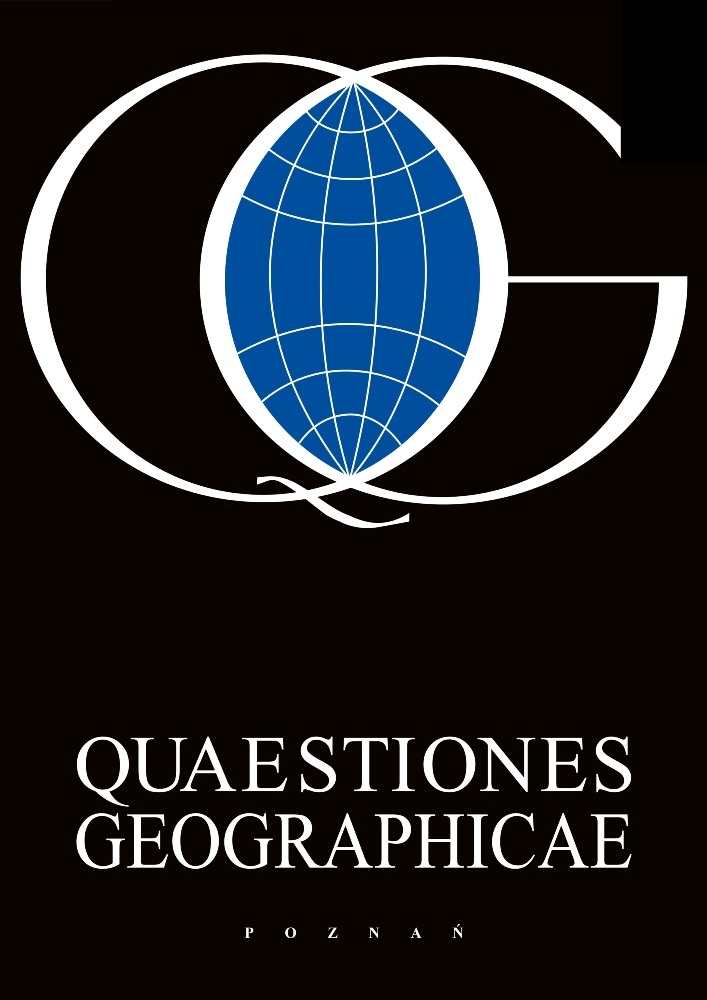Abstract
This study considers the climate at the time of the Weichselian ice sheet maximum in Central Europe, especially in Poland, in respect of the NASA Educational version of Global Climate Model (EdGCM). The final results of the EdGCM simulations for the Last Glacial Maximum (LGM) are presented here and these have been analysed to determine whether or not they are useful for regional scale modelling; the problem being that, in a global climate model, both horizontal and vertical grid resolution is very low. Also, an attempt has been made to define the role of the ice megalobe which, in terms of the numerical coarse-grid model, covered the northern parts of Germany and Poland. The broad details of the climate during the Weichselian are defined and our results are compared with previous opinion. The influence of ice megalobe on regional climate is demonstrated and it is also concluded that a coarse-grid global climate model could be a helpful tool in a regional climate recognition. However, whether at a regional or local scale, it is recommended that a specially-configured version of a Regional Climate Model (RCM) based on Global Climate Model (GCM) boundary conditions be used in similar reconstructions.
References
Antczak-Górka B., 2005. Głazy rzeźbione przez wiatr jako wskaźnik różnowiekowych stref peryglacjalnych ostatniego zlodowacenia w Polsce zachodniej (Wind-polished stones as indicators of last-glaciation periglacial zones of various ages in western Poland). Wydawnictwo Naukowe UAM, Poznań.
Braconnot P., 1999. Paleoclimate Modeling Intercomparison Project (PMIP). Proceedings of the Third PMIP Workshop, World Climate Research Programme, La Huardiere, Canada.
Baines P. G. & Fraedrich K., 1989. Topographic effects on the mean tropospheric flow patterns a round Antarctica. Journal of the Atmospheric Sciences 46: 3401-3415. DOI: https://www.doi.org/10.1175/1520-0469(1989)046<3401:TEOTMT>2.0.CO;2.
Chandler M. A., Richards S. J. & Shopsin M. J., 2005. EdGCM: Enhancing climate science education through climate modelling research projects. In: Proceedings of the 85th Annual Meeting of the American Meteorological Society, 14th Symposium on Education. San Diego, CA, pp. P1.5. http://edgcm.columbia.edu. http://edgcm.columbia.edu
Christiansen H. H. & Svensson H., 1999. Windpolish evidence: an important direct indicator of geomorphologically active paleo-winds. A reply to the discussion by Vanderberghe, Irsin and Renssen. Premafrost and Periglacial Processes 10: 203-204.
Dzierżek J. & Stańczuk D., 2006. Record and paleogeographical implications of Pleistocene periglacial processes in the Drohiczyn Plateau, Podlasie Lowland (Eastern Poland). Geological Quarterly 50: 219-228.
Ewertowski M., 2009. Ice-wedge Pseudomorphs and Frost-cracking structures in Weichselian Sediments, Central-West Poland. Permafrost and Periglacial Processes 20(4): 315-419. DOI: https://www.doi.org/10.1002/ppp.657.
French H. M., 2007. The Periglacial environment. Third Editions. J. Wiley and Sons, Chichester.
Goździk J., 1991. Sedimentological record of aeolian processes from the Upper Plenivistulian and the turn of Pleni- and Late Vistulian in Central Poland. In: S. Kozarski (ed.). Late Vistulian (Weichselian) and Holocene Aeolian Phenomena in Central and Northern Europe. Zeitschrift für Geomorphologie, Suplement-Band 90: 51-60.
Kasprzak L., 2003. Model sedymentacji lądolodu vistuliańskiego na Nizinie Wielkopolskiej (Model of the Vistulian ice-sheet sedimentation in the Wielkopolska Lowland). Wydawnictwo Naukowe UAM, Poznań.
Kozarski S., 1995. Deglaciation of nortwestern Poland: Environmental conditions and geosystem transformation 20-10 ka BP. Dokumentacja Geograficzna 1: 82 p.
Kutzbach J. E. & Webb IIIT., 1993. Conceptual Basis for Understanding Lake-Quaternany Climates. In: H. E. Wright, Jr.J. E. Kutzbach, T. Webb III, W. F. Ruddiman, F. A., Street-Perrot & P. J. Bartlein (eds). Global Climates since the Last Glacial Maximum. University of Minnesota Press, Minneapolis: 5-11.
Labeyrie L., Cole J., Alverson K. & Stocker T., 2003. The History of Climate Dynamics in the Late Quaternary. In: K. Alverson, R. S. Bradley & T. F. Pedersen (eds). Paleoclimate, global change and the future. Springer-Verlag, Berlin: 33-61.
Parish T. R. & Cassano J. J., 2003. Diagnosis of the Katabatic Wind Influence on the Wintertime Antarctic Surface Wind Field from Numerical Simulations. Monthly Weather Review 131 (6): 1128-1139. DOI: https://www.doi.org/10.1175/1520-0493(2003)131
Peltier W. R., 1994. Ice Age Paleotopography. Science 256: 195-201. DOI: https://www.doi.org/10.1126/science.265.5169.195
Renssen H., Kasse C., Vandenberghe J. & Lorenz S. J. 2007. Weichselian Late Pleniglacial surface wind over north-western and central Europe: a model comparison. Journal of Quaternary Science 22(3): 281-293. DOI: https://www.doi.org/10.1002/jqs.1038
Rew R. K., Davis G. P. & Emmerson S., 1993. NetCDF User's Guide, An Interface for Data Access. Version 2.3, April 1993.
Thorson R. M. & Bender G., 1985. Eolian deflation by ancient catabatic winds: A late Quaternary example from the north Alaska Renge. Geological Society of America Bulletin 96: 702-709. DOI: https://www.doi.org/10.1130/0016-7606(1985)96
Vandenberghe J., Isarin R. F. B. & Renssen H., 1999. Comments on windpolished boulders as indicators of a late Weichselian wind regime in Denmark in relation to neighbouring areas by Christiansen and Svensson [9(1): 1-21, 1998]. Premafrost and Periglacial Processes 10: 199-201. DOI: https://www.doi.org/10.1002/(SICI)1099-1530(199904/06)10:2
Yokohama Y., Lambeck K., Dekker P., Johnston P. & Fifleds K. L. 2000. Timing of the Last Glacial Maximum from observed sea-level minima. Nature 406: 713-716, DOI: https://www.doi.org/10.1038/35021035
License
This content is open access.
